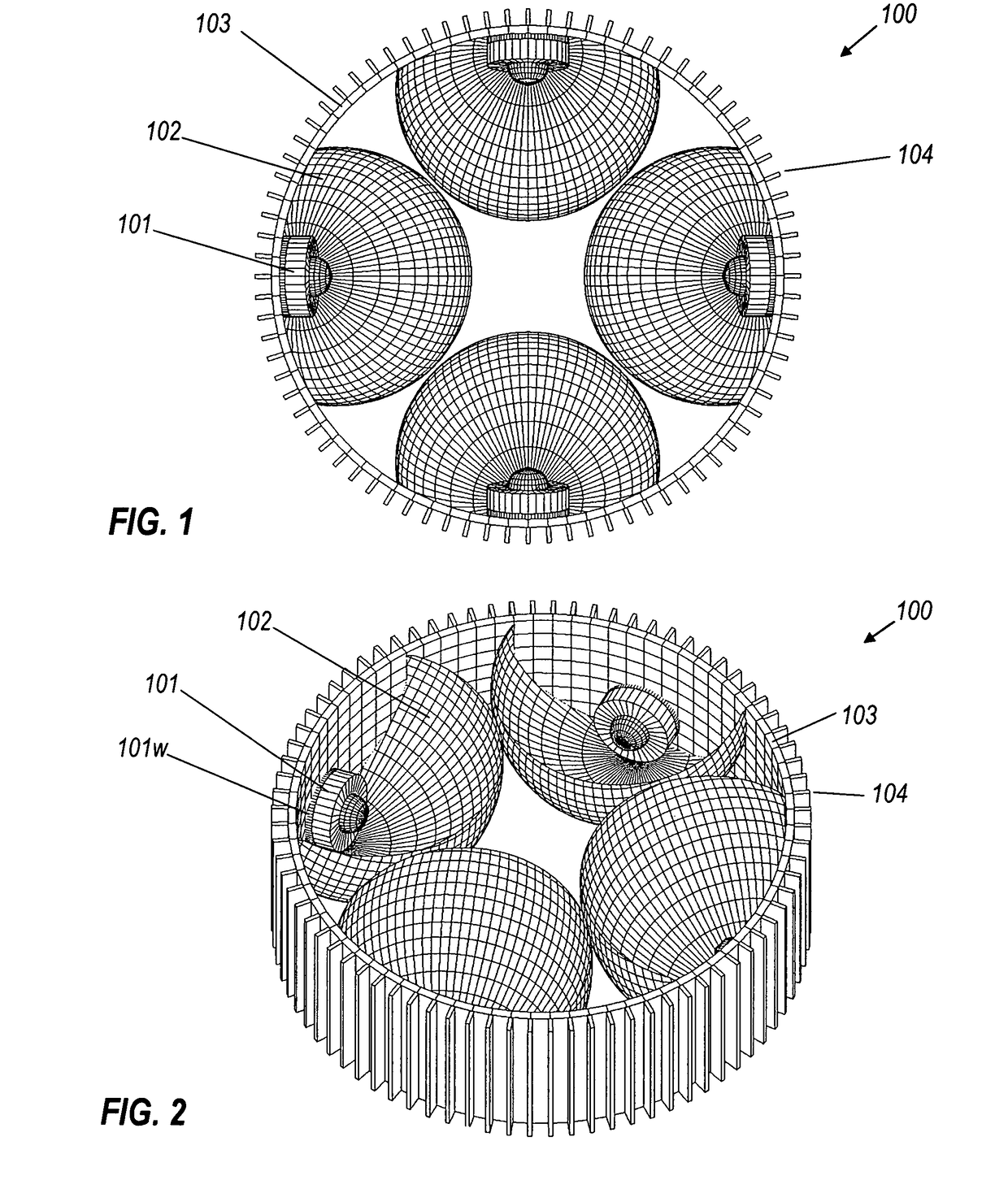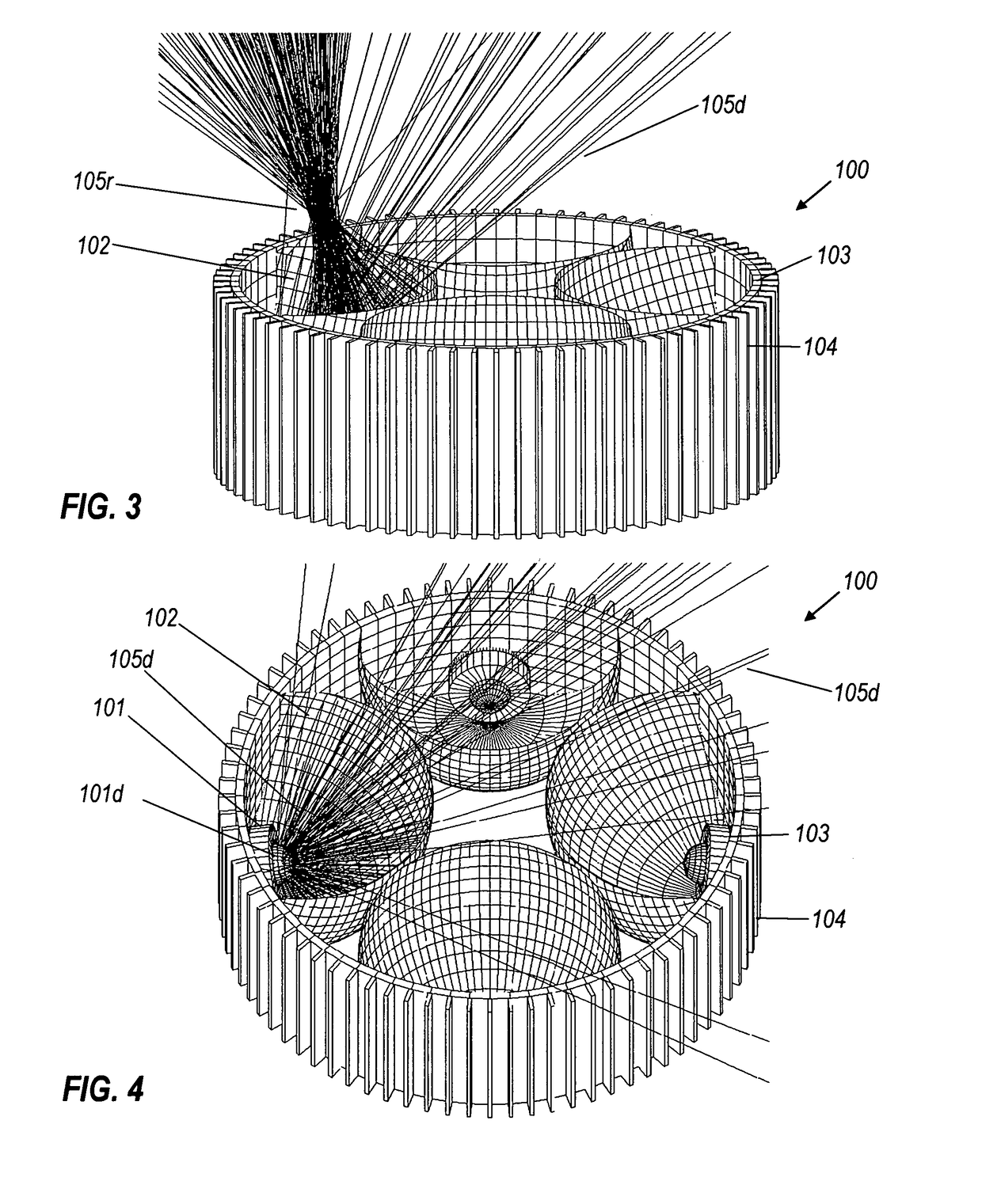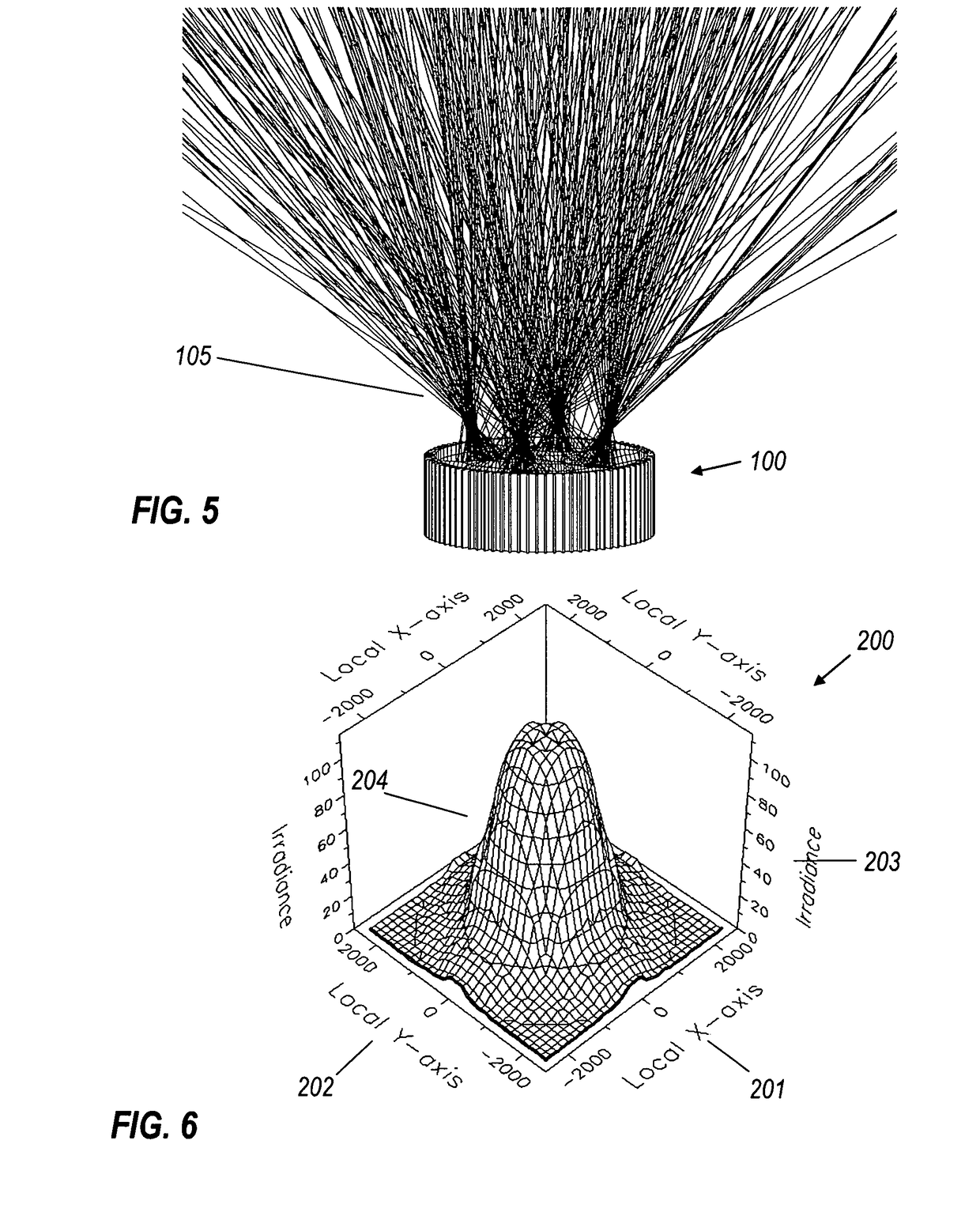Multi-reflector LED light source with cylindrical heat sink
a technology of led light source and heat sink, which is applied in the direction of semiconductor devices for light sources, light and heating apparatus, transportation and packaging, etc., can solve the problems of enlarge the emitting area and complicate thermal management, and achieve the effect of safe handling, high optical efficiency of the system, and simple structur
- Summary
- Abstract
- Description
- Claims
- Application Information
AI Technical Summary
Benefits of technology
Problems solved by technology
Method used
Image
Examples
Embodiment Construction
A better understanding of the features and advantages of the present invention will be obtained by reference to the following detailed description of the invention and accompanying drawings, which set forth illustrative embodiments in which various principles of the invention are utilized.
Referring to the drawings, and initially to FIGS. 1 through 5, FIG. 1 shows a plan view of an embodiment of a light source, indicated generally by the reference number 100, comprising LED packages 101, ellipsoidal reflectors 102, mounting cylinder 103, and convective fins 104. The ellipsoidal reflectors 102 are mounted on the inside of the cylinder 103, with each LED package 101 mounted centrally within a respective reflector 102. The fins 104 extend axially along, and project radially from, the outside of the cylinder 103. When the light source 100 is mounted in a ceiling can, the view shown in FIG. 1 is the view of the light source 100 as seen looking up from the floor.
The downward intensity of t...
PUM
 Login to View More
Login to View More Abstract
Description
Claims
Application Information
 Login to View More
Login to View More - R&D
- Intellectual Property
- Life Sciences
- Materials
- Tech Scout
- Unparalleled Data Quality
- Higher Quality Content
- 60% Fewer Hallucinations
Browse by: Latest US Patents, China's latest patents, Technical Efficacy Thesaurus, Application Domain, Technology Topic, Popular Technical Reports.
© 2025 PatSnap. All rights reserved.Legal|Privacy policy|Modern Slavery Act Transparency Statement|Sitemap|About US| Contact US: help@patsnap.com



